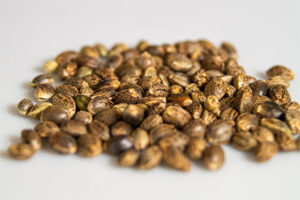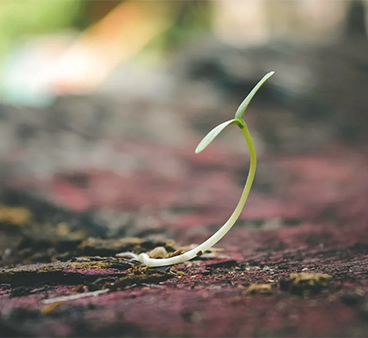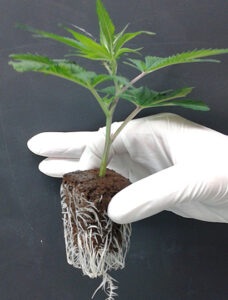When starting your personal cannabis grow, the first thing you need to decide is whether you will start from cannabis seeds or clones.
Below are some pro’s and con’s so you can make an informed decision and get started on the right path for you.
 Cannabis seeds can be a little more challenging and require the correct environment to germinate.
Cannabis seeds can be a little more challenging and require the correct environment to germinate.
Since no two cannabis seeds are the same due to slightly different genotypes, there’s really no way to tell whether the seed is viable and will sprout even in the perfect conditions.
Given variations in genotypes produced from the same mother plant, each plant will always have variations from its parents and siblings.
Starting a cannabis grow from seeds also requires more time as a seed can take anywhere from 3-7 days to sprout, during which time, they will use the nutrients and energy provided in the initial cotyledon leaves.
Cannabis seeds can be germinated in a variety of mediums including soil, coco, and rockwool being the most common.
After the cannabis seed has sprouted and rooted properly, it can be transplanted into a larger container and begin its journey.
When acquiring seeds, there are a few options to consider, feminized, regular, or auto flower.
 Feminized seeds tend to cost a little more, but you get the benefit of bypassing the sexing stage which in turn saves weeks just to determine the sex of the plant.
Feminized seeds tend to cost a little more, but you get the benefit of bypassing the sexing stage which in turn saves weeks just to determine the sex of the plant.
The ultimate goal in most personal growers’ attempts are to grow female plants which in the end provide the product everyone is looking for.
If male plants are detected, they would be removed from the grow area immediately before they have a chance to pollinate and fertilize any female plants and cause them to produce seeds.
Regular seeds will certainly cost less than female seeds, but with regular seeds there is now way to determine the sex of the newly cultivated plant.
The new seedling will have to grow to a reasonable size in which time a clipping will be taken, spend about a week rooting, then transplanted and put under 12hrs of light so that it can be forced to begin the flowering process.
Once the flowering stage has begun, it would take another few days to a couple of weeks of observation to determine whether or not the plant has produced either male or female preflowers.
If female preflowers have been determined, the original seedling can then continue it process of vegetation before moving her into the flowering stage.
Ruderalis or auto flowering seeds are a little different in that they will flower based on their biological clock instead of a photoperiod that require a change in light cycles.
Auto flowering plants are hybrids and tend to remain on the smaller, bushier side of the spectrum.
A Soothing Seed offers germination services to our clients.
 Clones on the other hand are usually rooted and ready for immediate transplant into your final grow system whether that be indoor or outdoor, soil, hydro, or passive hydroponics.
Clones on the other hand are usually rooted and ready for immediate transplant into your final grow system whether that be indoor or outdoor, soil, hydro, or passive hydroponics.
The advantages to growing cannabis from clones is not only speed, but clones are already fully rooted, established, and ready for transplant.
Clones carry the genetic traits of the mother plant and in most cases are disease free.
The drawback to growing cannabis clones depends on the source and the health of the initial mother plant.
Its often difficult to know exactly what strain you’ve received and how many generations the mother has been cloned from.
Continuing to take cuts from mother plants and cultivating new mothers is like re-copying a copy over and over again, they simply degrade with each generation.
Cultivation from cannabis clones is usually a three-month total grow cycle with one month of the vegetative phase, and two months or 90 days in the flowering phase.
The total time required will be based on the specific strain and grow environment.
Another advantage to growing your cannabis from a clone is knowing your plant will be a female, as long as the donor plant was also a strong female plant, this bypasses the sexing stage and the issue of having to watch for male plants.
